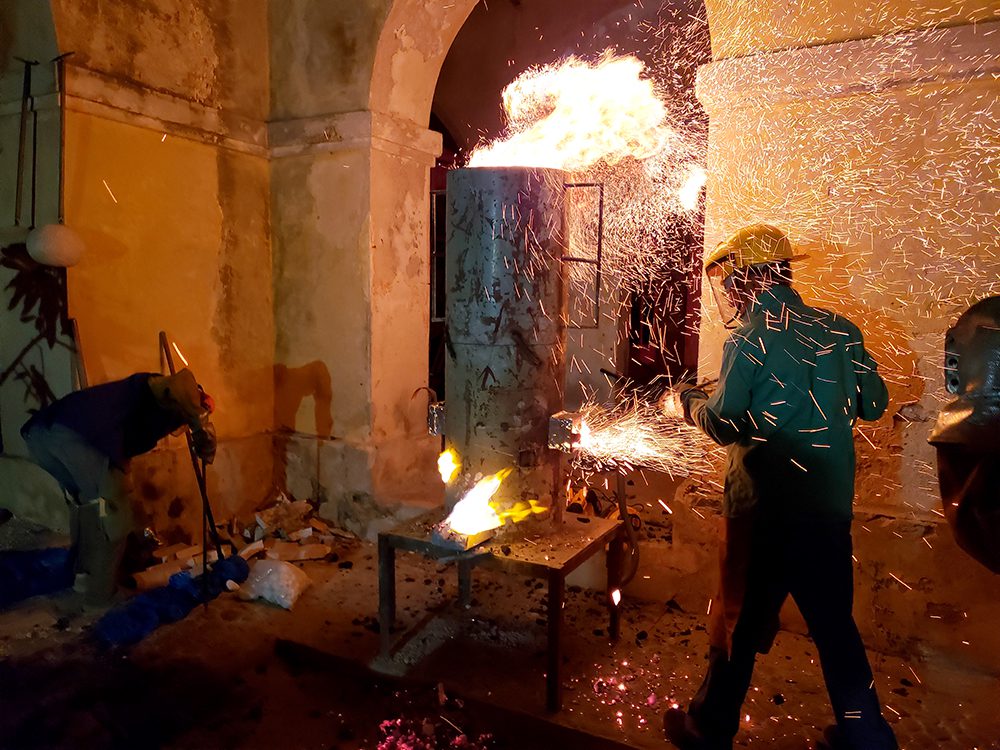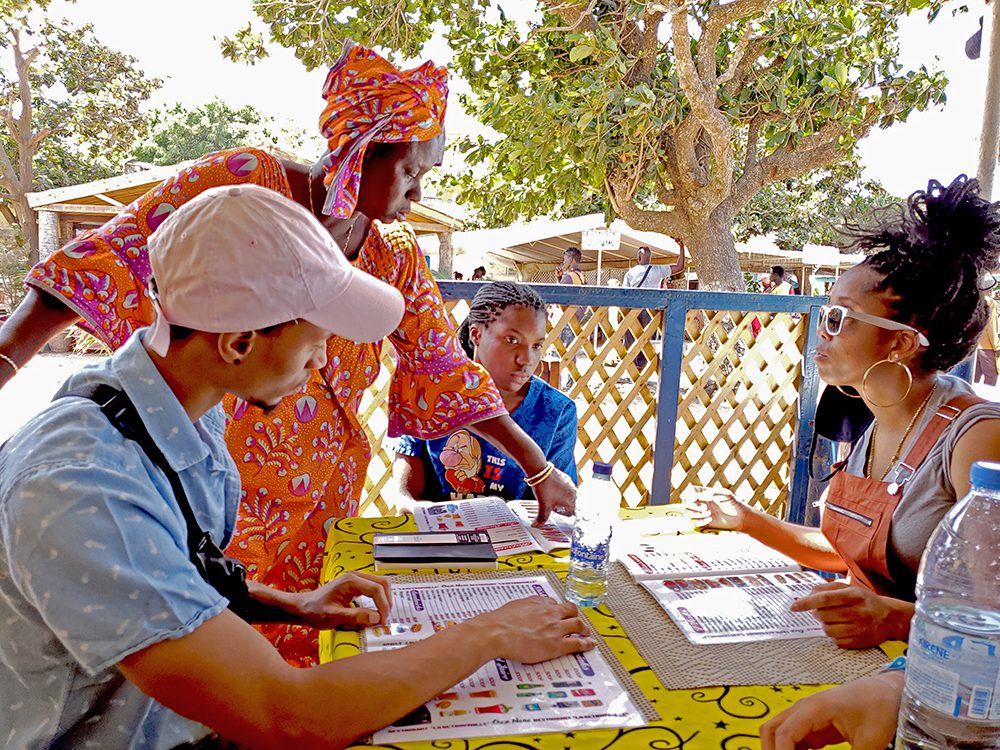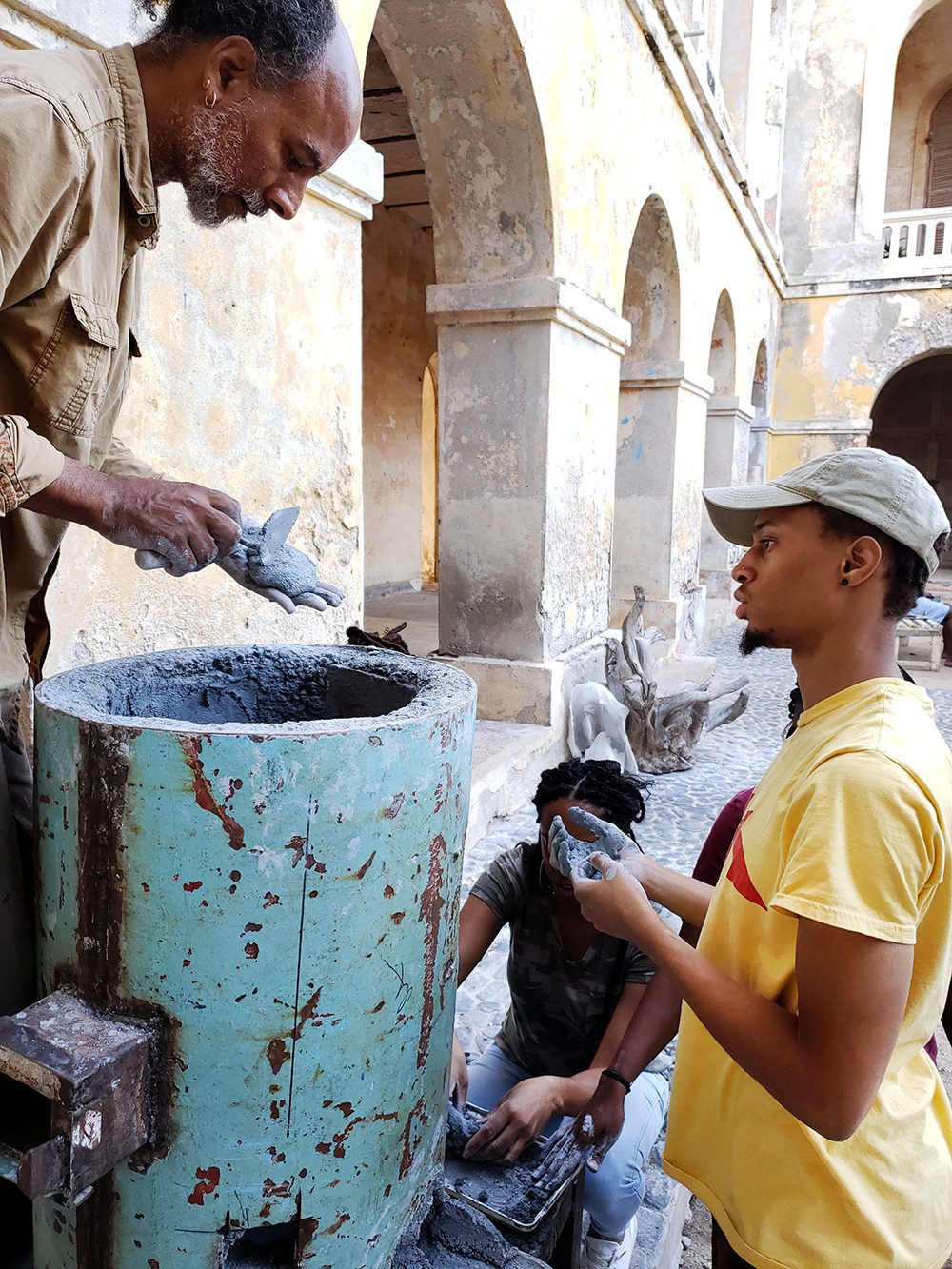Big Picture: Students use art to connect with their heritage

Recently, a small group of art students from UNC Charlotte traveled to the African country of Senegal to take part in a celebration of African history, art and culture. Senegal’s Gorée Island, situated just off the Senegalese coast in the Atlantic Ocean, holds an important yet painful legacy to Africa’s history, and is home to the Gorée Island Diaspora Festival.
From the 15th to the 19th centuries, the island was the largest slave trading center on the West African coast. It was named a UNESCO World Heritage Site in 1978.
Today, it is home to more than 1,000 people, many of whom are descendants of slaves forced to leave Africa from the island.
The annual international art festival was established to promote links through art and cultural exchange to bring members of the African diaspora closer together. The festival’s ultimate hope is to build a better future where communities can grow closer to eliminate all forms of discrimination.
The students participated in the festival’s first iron pour, working with a group of art students from Senegal and other countries to create a collaborative work that honors the African diaspora. The pieces created from the iron pour were cast using templates designed by the different student groups symbolizing the mixing and unity of cultures. The final sculpture composed of iron fish, symbolic of the island’s connection to the ocean, was personalized by the local Senegalese children.

For the UNC Charlotte students—Sheree Davidson, Nadia Meadows and Chauncey Carter—the festival served as a way to create connections and build bridges with their cultural heritage. One student described the experience as a feeling of “returning home.”
As we celebrate Black History Month, Davidson, a junior illustration major, and Meadows, a senior fine arts major, offer their thoughts and newfound perspective following their trip to the Gorée Island Diaspora Festival.
What was your overall takeaway from this trip?
Nadia: I’m so appreciative to take part in such a wonderful, life-changing experience. Not only was it my first international experience, but it allowed me—an African American student—to go to Africa and participate in art, which is the thing I love the most. I’ll never forget the people telling me ‘welcome home, Sister’ as I walked around. It was surreal being in a place that I fit in based solely on the way I look; I’ve never felt that before.
Sheree: Words cannot express what the experience meant to me. To be back in a place where my ancestors may have last seen Africa, and to have the freedom to travel around and do artwork there brought everything full circle. It was a touching experience for me. It also was a dream come true to create art alongside African artists and to see so much Black/African artwork. That’s definitely something I’d like to see more visible and represented in America.

Did anything have a greater impact than you expected?
Nadia: On Gorée Island, there’s a place called Maison des Esclaves (House of Slaves). It’s a museum and memorial honoring and recognizing the place where so many slaves were imprisoned and exported against their will. This was the last stop before getting on the slave ship. My feelings were overwhelming while walking around the site. I remember the ocean air was thick and full of emotion.
Sheree: What surprised me the most was how humble the African students were. They truly made the best of what they had. Being able to experience what they go through daily is something that’s going to stick with me forever. I realize I’ve taken for granted the luxury of having my own computer and art stores nearby to purchase supplies.
As artists, how has your art been changed or inspired?
Sheree: I’m not sure I view art differently but I appreciate the fact that art has the ability to connect so many people on different levels. It allows for a different form of communication, an expressive form, that sometimes can give a voice to the voiceless. And as an illustrator, I want to allow some of the traditional artwork I was able to interact with on the trip to be represented in my work so that heritage is not forgotten.
Nadia: The way I think of my art has changed. I view my art now as a vehicle for messages that might otherwise never get spoken. I want my art to make people pause and think about issues they’ve never contemplated.
Has your world perspective changed as a result of this trip?
Sheree: My perspective changed more than I could ever have imagined. I went into this trip with my guard up, worried that we would be judged based on being Americans. But we were welcomed with open arms and warm hearts. I walked away with such humility for all I was able to experience and gratefulness for everything I have in my life.
Nadia: I find that I’m more aware of other people’s situations. Coming out of this trip I’m so grateful for everything I have and the opportunities I have in the U.S.
